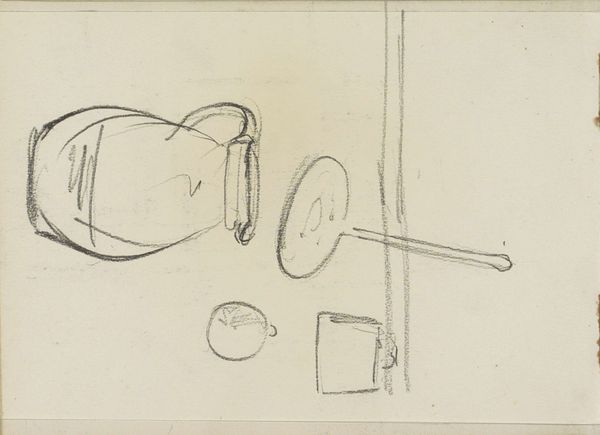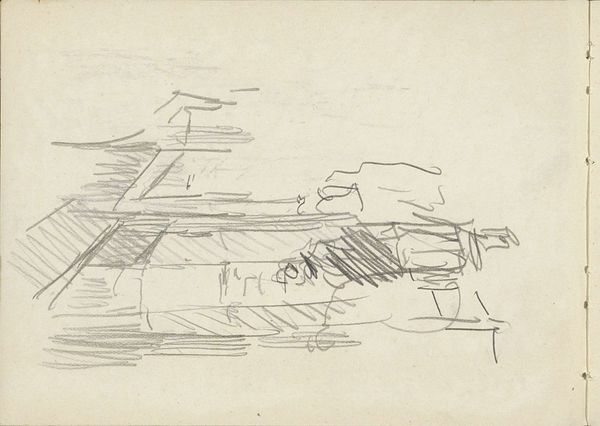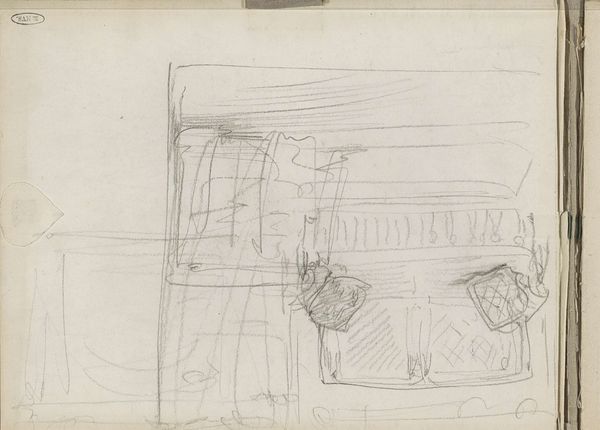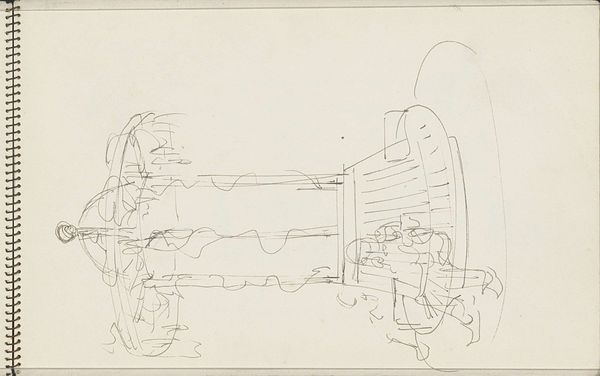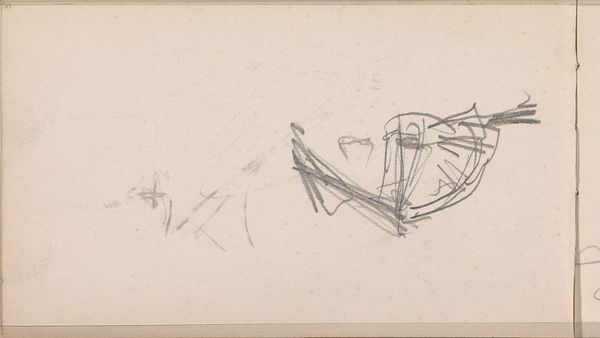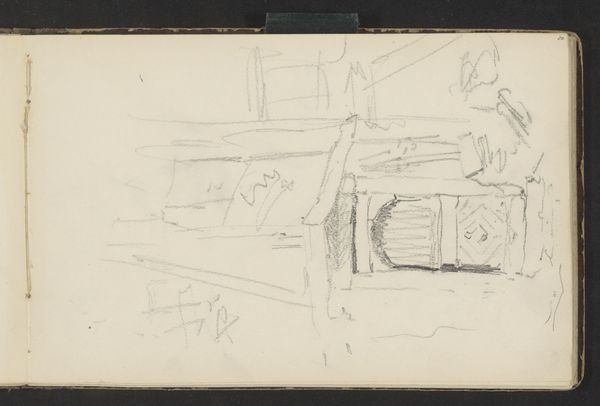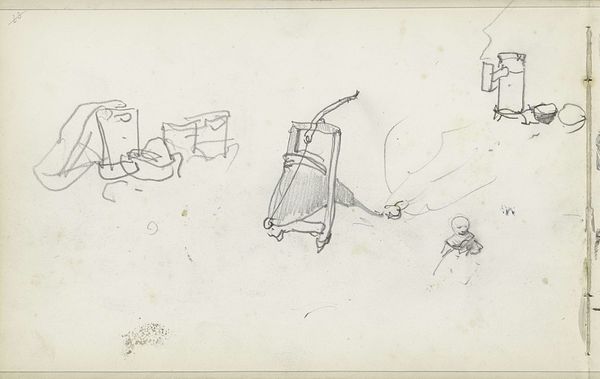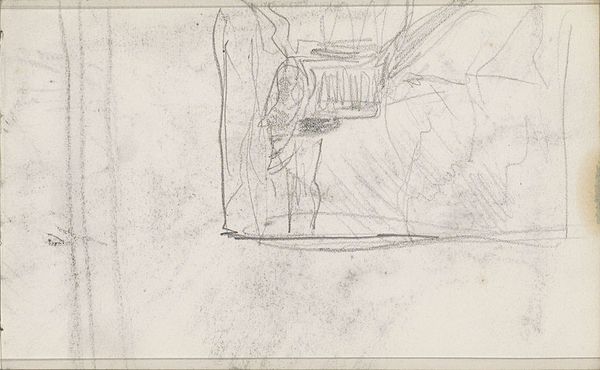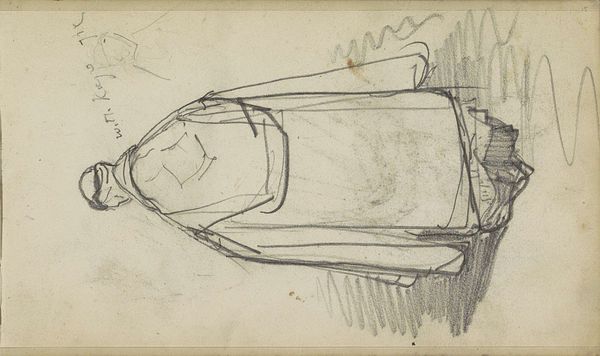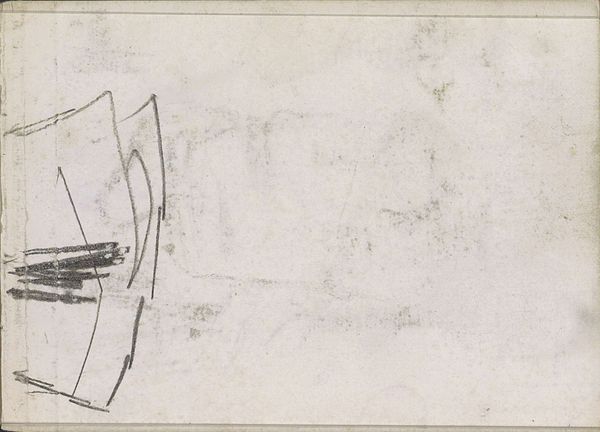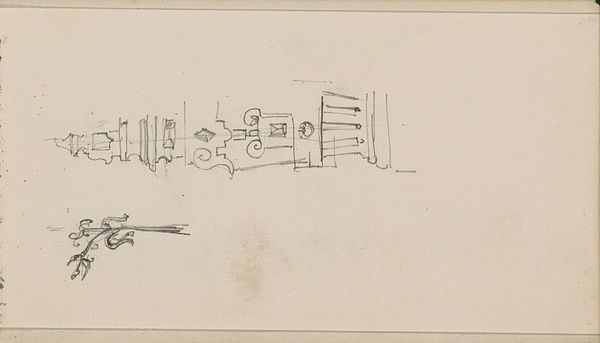
drawing, pencil
#
drawing
#
aged paper
#
quirky sketch
#
sketch book
#
personal sketchbook
#
idea generation sketch
#
sketchwork
#
geometric
#
pen-ink sketch
#
pencil
#
sketchbook drawing
#
storyboard and sketchbook work
#
initial sketch
Copyright: Rijks Museum: Open Domain
Curator: Before us we have "Architectuurdetails," a pencil and pen-ink sketch created around 1896 by Carel Adolph Lion Cachet. It's currently held here at the Rijksmuseum. Editor: Immediately, I see a deconstruction. The sketch has a fractured, almost dreamlike quality—familiar architectural components rendered strange, weightless. It disrupts any traditional notion of form or function. Curator: Indeed. Look at the paper itself. The texture indicates it was part of a personal sketchbook, a space for the artist's preliminary ideas. It shows the process, the raw labor that birthed the artist's vision. This brings us closer to Cachet's design and thought process, challenging the myth of the singular artistic genius and bringing awareness to the social condition of art production as an evolutionary process. Editor: The geometrical components seem to float independently; there's an interplay between positive and negative space which keeps it engaging despite the absence of traditional shading. Notice how the linear qualities create implied shapes which create balance. Curator: Precisely! It is likely that it was used for idea generation and documentation rather than an artistic goal. Consider the social and material conditions: What resources were available to him? What sort of commissions was he working on concurrently? We see not just artistic intention, but also the potential limitations and possibilities shaped by broader economic and societal forces. Editor: But to divorce it completely from aesthetic value would be amiss. The suggestive forms and ghostly lines invite subjective interpretation. How do the fragmented lines communicate a mood? What happens if we emphasize certain elements or rotate the artwork? There’s freedom in its incompleteness. Curator: I concede that it does provide creative opportunity for viewers, allowing subjective thought about material history and means of production, therefore democratizing art analysis, de-centering the authority traditionally invested in finished artworks. I do believe it offers an entry point to the complex labor and choices involved in artmaking, offering an important counternarrative in a museum filled with often polished and seemingly effortless works. Editor: Perhaps what’s most striking, ultimately, is the work’s invitation to pause and reconsider, regardless of context, what constitutes an ideal, aesthetically, as each line plays against the others.
Comments
No comments
Be the first to comment and join the conversation on the ultimate creative platform.
